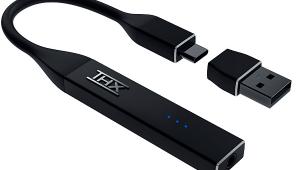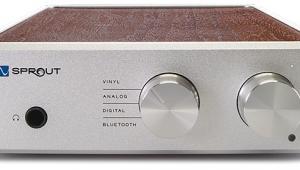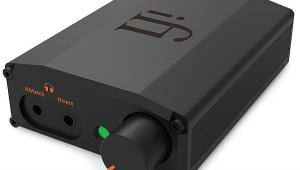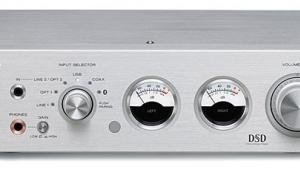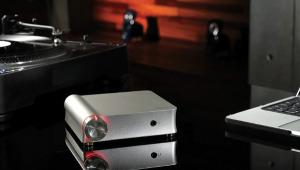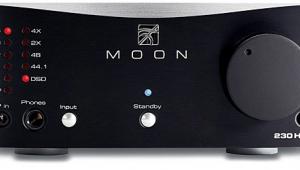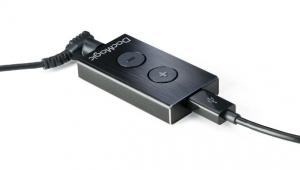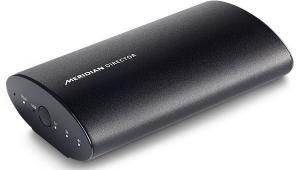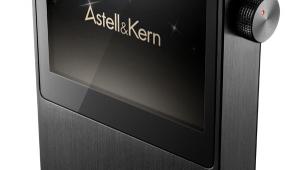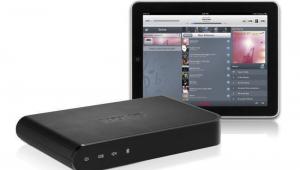Review: Pure i-20 and Pro-Ject Dock Box S Digital Page 2
Pro-Ject Dock Box S Digital
(available in May 2012, $249, sumikoaudio.net/project/)
The Pro-Ject Dock Box S Digital (Pro-Ject offers several flavors of this dock; this one offers the greatest number of connectivity options, including a S/PDIF output) is a high-quality digital-to-analog converter in a small, compact dock. It has a plain façade, with a power switch and power indicator on the front. The top of the box has a 30-pin connector with a plain (and adjustable) metal bracket that will support and charge an iPod or iPhone — and, significantly, an iPad. The Pro-Ject is Apple-certified to support all current iDevices, including the iPad
According to the instructions, for proper dockage, any covers must be removed from the iPod. I have a very thin Gelaskin on my iPod Nano, and it didn’t pose a problem. All the other I/O connections are on the back of the dock. It has analog stereo RCA outputs, a coaxial S/PDIF digital output and an S-Video output. If you have a good quality D/A converter in your receiver, or a stand-alone converter, you can use the S/PDIF connection (here at S+V, we connected this to a few headphone amps via our trustworthy Musical Fidelity V-DAC II, and found it worked just fine). However, most of what you’re paying for with the Pro-Ject Dock is its built-in converter, a Cirrus Logic 24 bit/192kHz unit. In addition, the onboard XMOS audio processor is said to guarantee ultra-low jitter levels. Finally, the dock comes with an IR Remote that controls volume and all playback functions.
Obviously, connecting to this device is easy. I primarily wanted to check out the onboard converter, so I connected the dock’s analog audio outputs to my receiver. I’ve loaded Adele’s “21” onto my iPod Nano using a WAV encoder. I also have files that were imported using the Apple Lossless encoder. FYI, a four-minute song encoded as a WAV file is about 40MB, while the Apple Lossless file of the same song is about 22.5MB. I listened to “Someone Like You.” The sound out of the Dock Box is incredibly clean. The piano introduction has a full, rich sound. There are no audible artifacts. Perhaps what’s most obvious isn’t the sound of the piano at all, but the sound of the spaces between the piano notes. There is a natural decay and “air” that tends to be smeared in lower bit-rate conversions. That was not the case here. To my ear, as one would expect, there wasn’t an audible difference between the WAV files and the Lossless files.
- Log in or register to post comments
